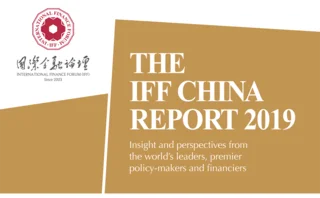
After the storm


In the wake of the 2007–08 crisis, the world’s financial structure underwent significant adjustments. The balance sheets of commercial banks have improved, despite many firms bearing the brunt of the financial crisis during those first years of recovery. Losses were great, and a number of major commercial banks were shuttered. In Europe and the US, some firms were nationalised. But, following more than a decade of change, commercial banks have started to evolve once again.
One result of this recovery has been an expansion of capital markets. As banks refine and reduce their balance sheets and deal with non-performing assets, the share of the capital market as a proportion of the entire economy has grown remarkably. Accordingly, some countries have raised the ratio on the amount of fundraising activities that can take place in the market – although China is yet to do so.

Meanwhile, shadow banking – the importance of which was highlighted in the initial phases of the financial crisis – continues to develop. Shadow banking causes disruption to the wider financial system and, in the wake of the crisis, financial authorities attempted to regulate the sector.
The market has also become more concentrated since the crash. The dominance of the top five banks and insurance companies – those with healthy balance sheets in 2008 – has continued because many of the smaller financial institutions were unable to endure the recovery period and were either merged, acquired or went bust.
There are obviously other factors at play, but those discussed have had a more prominent structural impact within the financial services industry.
On the monetary side, inflation has remained low. The top priority of most central banks is to maintain price stability; between 1995 and 2004, many of them implemented counter-
inflationary measures to stabilise prices. After 2004, prices began to fall.
As the economy continues to recover, changes are expected in the balance of payments. China currently has a large trade surplus while the US is running a trade deficit – a situation that requires recalibrating. A decade on from the crisis, the current account imbalance is narrowing at a global level. But, simultaneously, capital flows are changing and in some countries even reversing. It is foreseen that a new international pattern within the balance of payments will emerge in the near future, when financial factors may be more important than real economic indicators.
By far the greatest monetary factor to consider in the coming years will be the divergence in monetary policy. Following the financial crisis, interest rates worldwide were slashed by the world’s central banks, and they have remained low during the recovery period. Global real interest rates have plunged from about 5% in 2004, and for a time the rate remained negative. Monetary policy, as a result, diverged and in some parts of the world turned negative. It is now believed that real interest rates are lower than estimated by many central banks.
The US Federal Reserve has begun to normalise its policy stance. However, Fed chairman Jerome Powell expects no rate rises in 2019, largely as a result of sluggish global growth. The Fed has also indicated it will end the shrinking of its balance sheet in September 2019.
The import of these changes is yet to be fully realised; the world is changing rapidly, and financial institutions and regulators must keep pace. It is impossible to predict the future, and we must view the world with an ever-evolving mindset attuned to its permanent evolution. We must formulate new policies based on new practices.
Only users who have a paid subscription or are part of a corporate subscription are able to print or copy content.
To access these options, along with all other subscription benefits, please contact info@centralbanking.com or view our subscription options here: subscriptions.centralbanking.com/subscribe
You are currently unable to print this content. Please contact info@centralbanking.com to find out more.
You are currently unable to copy this content. Please contact info@centralbanking.com to find out more.
Copyright Infopro Digital Limited. All rights reserved.
As outlined in our terms and conditions, https://www.infopro-digital.com/terms-and-conditions/subscriptions/ (point 2.4), printing is limited to a single copy.
If you would like to purchase additional rights please email info@centralbanking.com test test test
Copyright Infopro Digital Limited. All rights reserved.
You may share this content using our article tools. As outlined in our terms and conditions, https://www.infopro-digital.com/terms-and-conditions/subscriptions/ (clause 2.4), an Authorised User may only make one copy of the materials for their own personal use. You must also comply with the restrictions in clause 2.5.
If you would like to purchase additional rights please email info@centralbanking.com test test test







